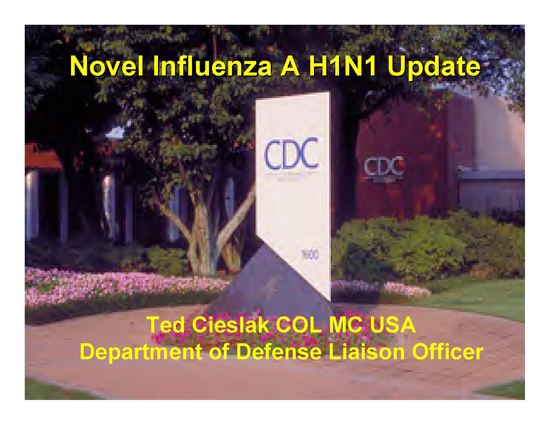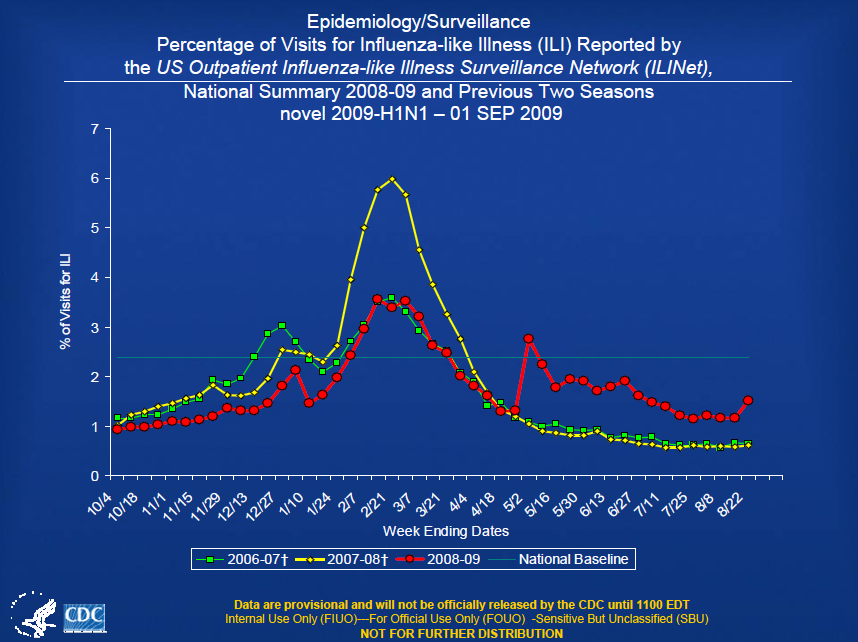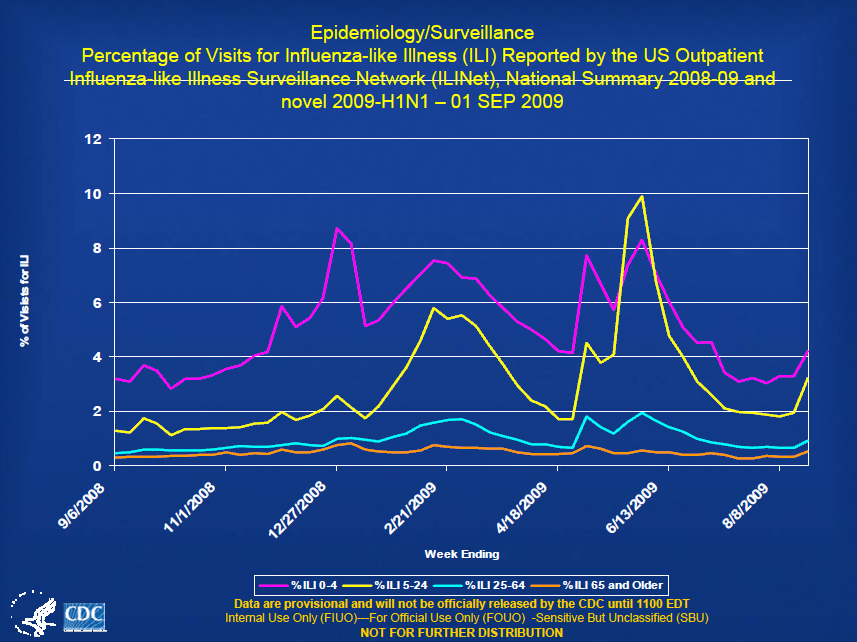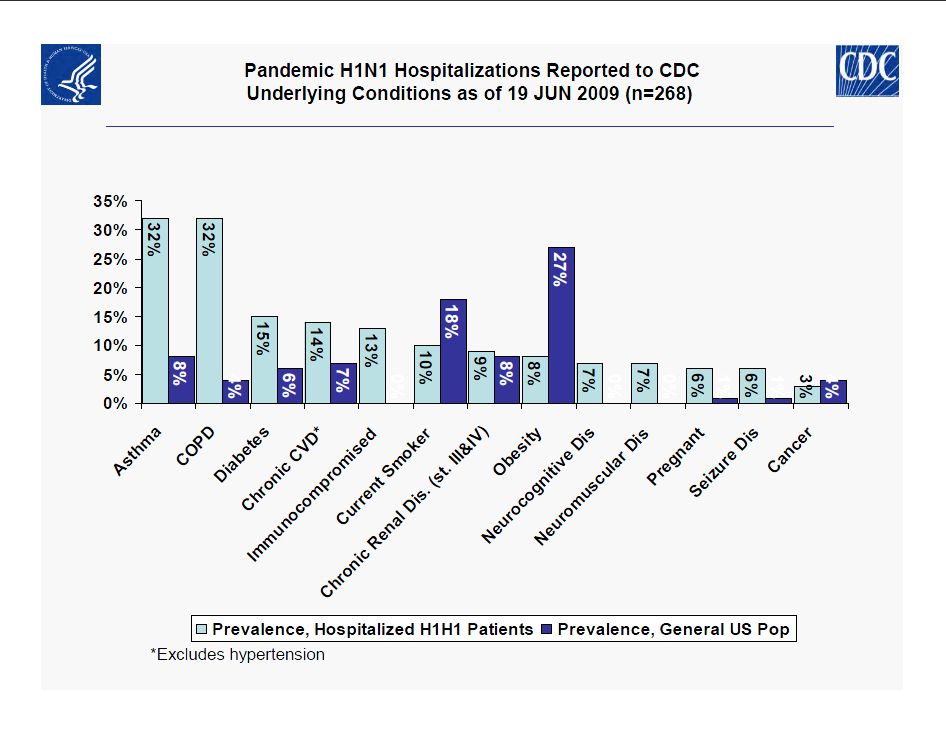Centers for Disease Control and Prevention
- Ted Cieslak COL MC USA, Department of Defense Liaison Officer
- 50 pages
- For Official Use Only
- Sensitive But Unclassified
- September 22, 2009
Pandemic Influenza in the Past
- Past Pandemics
- 1918 (H1N1)
- 40-50 million deaths, 500K in US
- 1957 (H2N2)
- 2 million deaths, 70K in US
- 1968 (H3N2)
- 1-4 million deaths, 34K in US
…
U.S. Military Laboratory-Based Influenza Surveillance
- Sentinel Site Surveillance
- Through USAFSAM, Brooks City Base TX
- Hospital & Clinic-Based
- Recruit Training Surveillance
- Through NHRC, San Diego CA
- Overseas Surveillance
- Through NAMRUs, other labs
…
Response to H1N1
• Strategic National Stockpile
• Distributed 25% pro rata supply
• Enhanced Surveillance Initiated
• PCR panH1N1 kits for testing
• Development at CDC, EUA at FDA, manufacture at ATCC, and ready to ship in ~ 2.5 weeks
• Distributed Kits, so far:
• Domestic: 95 labs
• DOD: 15 labs
• International: >250 labs in 140 countries
• Virus Characterization
• >1000 genes sequenced from >260 viruses
• Submitted to GenBank…
H1N1 “Current” Status
- Lab-Confirmed Cases
- 44,317 total cases when reporting stopped in July
- 8,842 hospitalized
- 555 deaths
- Represents approximately 3 M cases
- Overall activity has declined since schools closed, but focal areas of activity have increased
- Viruses in US and Internationally show no evidence of significant genetic/antigenic change
…
…
- Disease likely persists through summer in US, possible surge in late August when school returns
- Monitor closely for genetic and antigenic virus changes
- Expected higher attack rate (20-30%) than in spring (6-15%), notably affecting younger individuals
- Vaccine availability possibly mid October, Federal funds for distribution and administration are available
- Healthcare facility support in part from HPP grants
- SNS Antiviral stocks likely to be distributed
- Drifted H3N2 may co-circulate with novel H1N1




